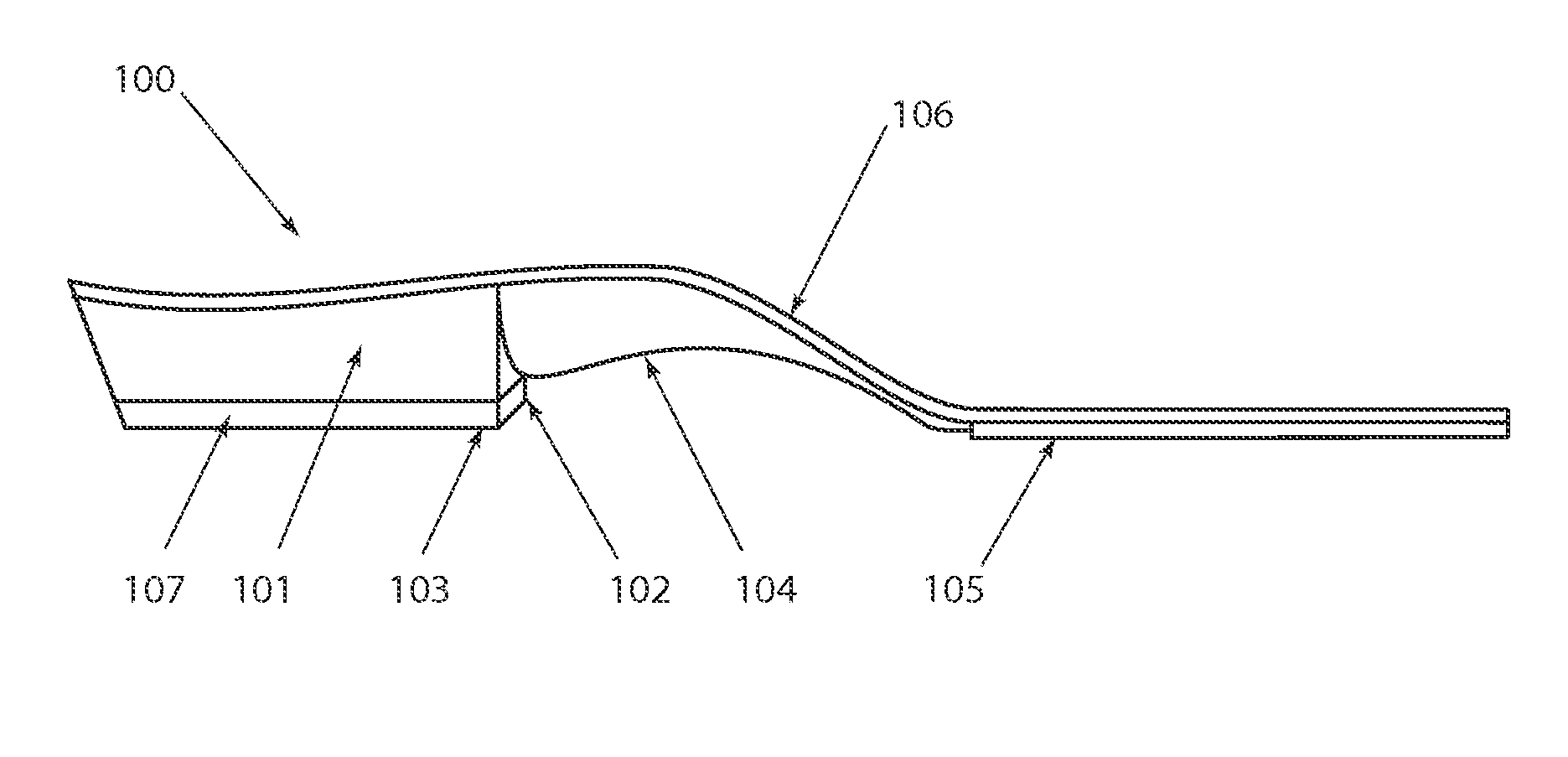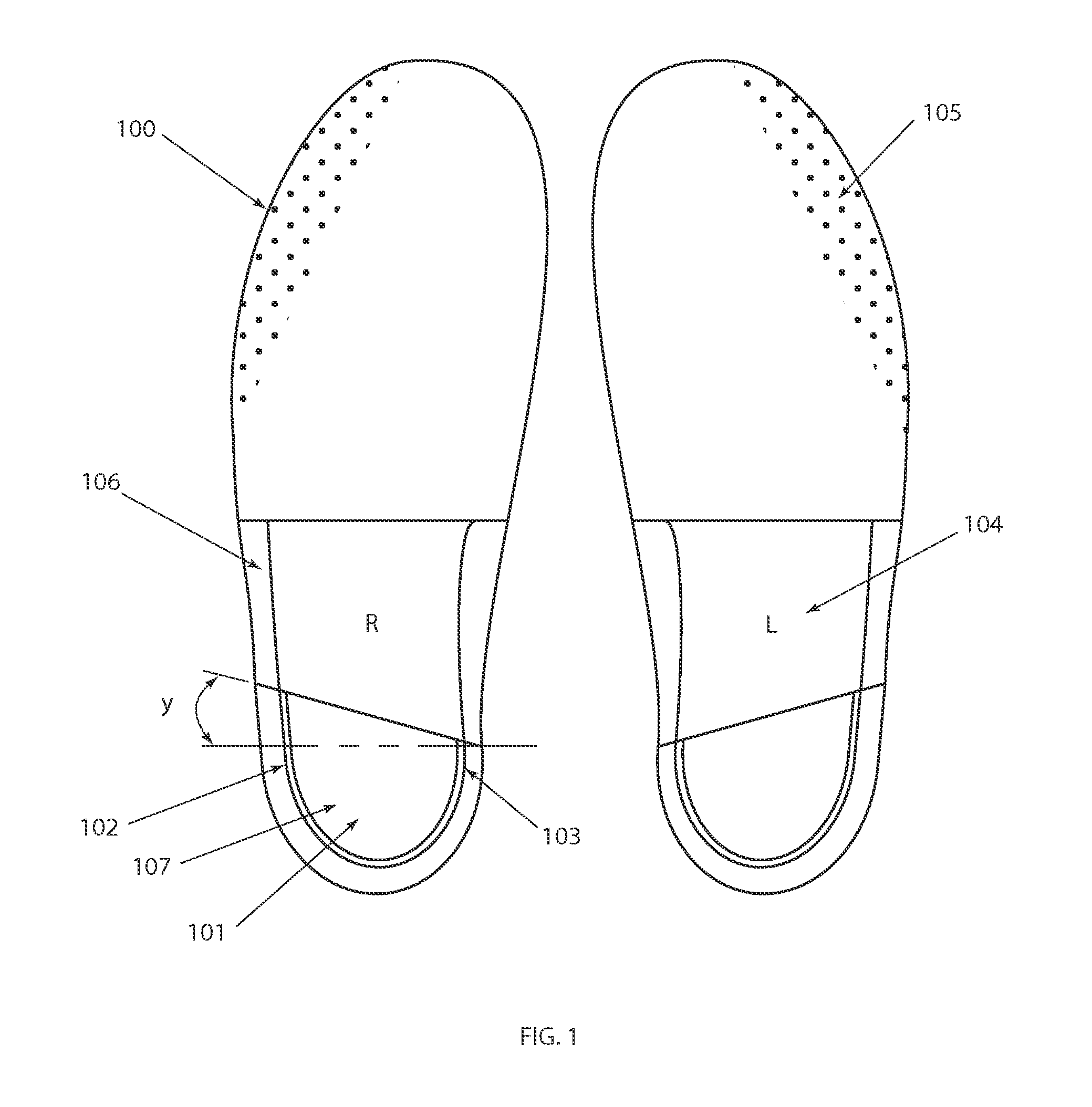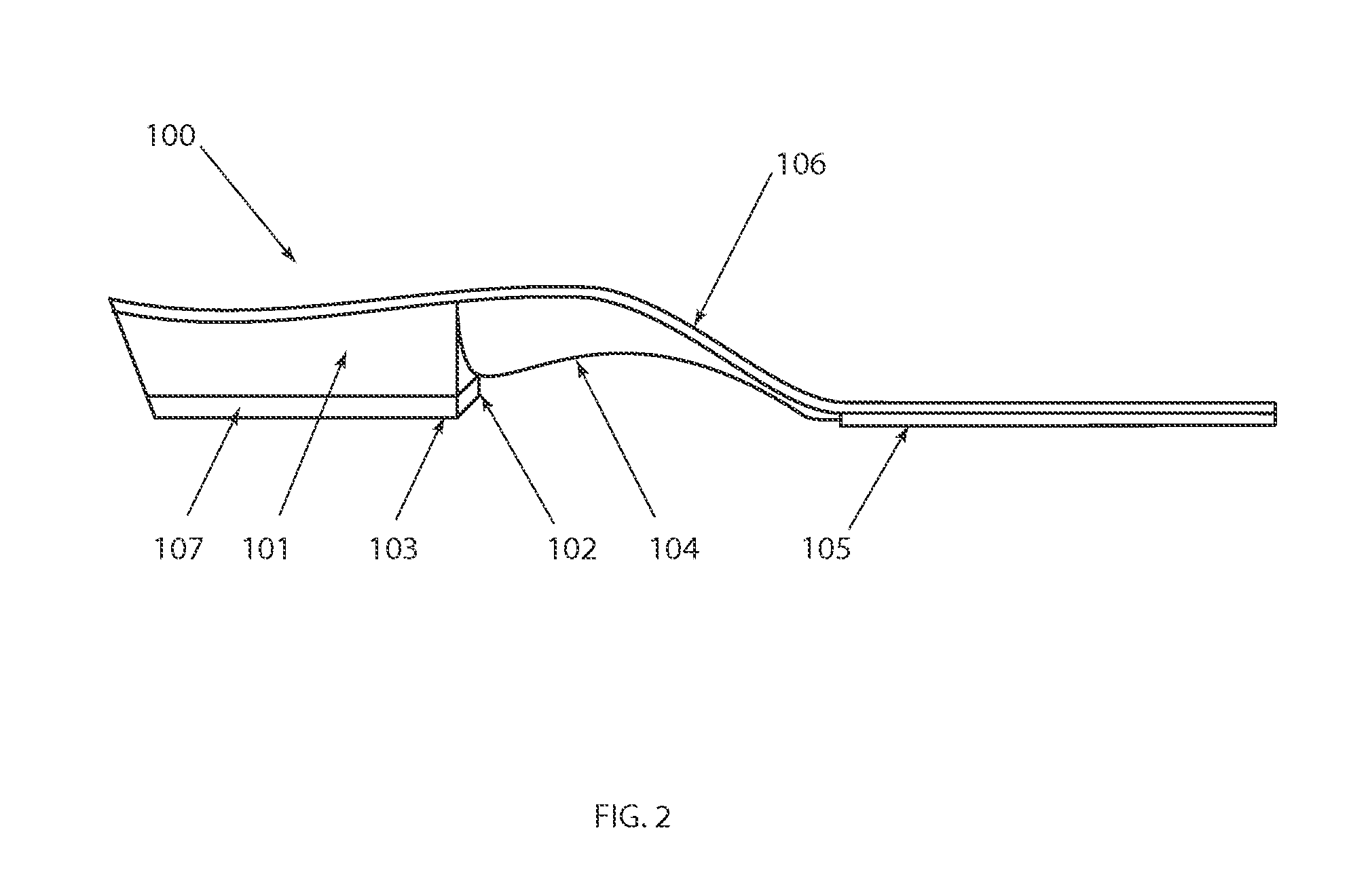Golf Orthotic and Method of Use
a golf orthotic and shoe insert technology, applied in the field of orthotics, can solve the problems of difficult visualization and fully understanding, and the foot movements required to make a correct golf swing will not come naturally, so as to improve accuracy, improve golf swing ability, and increase distance
- Summary
- Abstract
- Description
- Claims
- Application Information
AI Technical Summary
Benefits of technology
Problems solved by technology
Method used
Image
Examples
Embodiment Construction
[0021]One embodiment of the golf orthotic 100, is shown and described in FIGS. 1 through 3. Golf orthotic 100 includes; a semi-rigid shell 104, a top cover 106, and anti-skid forefoot pad 105, and heel post 101.
[0022]Semi-rigid shell 104 is the foundation for the golf orthotic 100, and includes a deep heel cup 109 and arch support 108; the forefoot portion of shell 104 extends to approximately the metatarsal-phalangeal joint of the foot.
[0023]Top cover 106 is adhesively attached to shell 104 and provides user comfort and friction protection. In one embodiment, top cover 106 extends the entire length of the foot as shown. In another embodiment, top cover 106 terminates at the leading edge of semi-rigid shell 104. Heel cushion 110 is disposed under top cover 106 and is positioned to receive the wearer's calcaneus.
[0024]One embodiment includes an anti-skid forefoot pad 105. The forefoot pad 105 provides a cushioning effect under the metatarsal heads and includes a friction feature to h...
PUM
 Login to View More
Login to View More Abstract
Description
Claims
Application Information
 Login to View More
Login to View More - R&D
- Intellectual Property
- Life Sciences
- Materials
- Tech Scout
- Unparalleled Data Quality
- Higher Quality Content
- 60% Fewer Hallucinations
Browse by: Latest US Patents, China's latest patents, Technical Efficacy Thesaurus, Application Domain, Technology Topic, Popular Technical Reports.
© 2025 PatSnap. All rights reserved.Legal|Privacy policy|Modern Slavery Act Transparency Statement|Sitemap|About US| Contact US: help@patsnap.com



